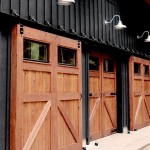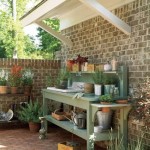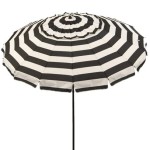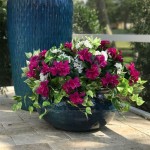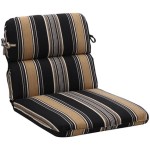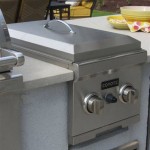Solar Powered Outdoor Ceiling Fan For Pergola
The integration of solar power into outdoor living spaces is gaining momentum as homeowners increasingly seek sustainable and energy-efficient solutions. One such application is the solar-powered outdoor ceiling fan for pergolas. This combination offers both comfort and environmental responsibility, providing a viable alternative to traditional, electrically-powered fans. This article explores the benefits, components, installation considerations, and maintenance requirements associated with solar-powered outdoor ceiling fans designed for pergola structures.
A pergola is an outdoor structure typically constructed with vertical posts or columns that support cross-beams and an open lattice. Pergolas offer partial shade and create a defined outdoor living area. They are often used as extensions of the home or standalone features in gardens and patios. The open design, however, can make these spaces susceptible to temperature fluctuations and stagnant air. A ceiling fan, traditionally powered by AC electricity, can mitigate these issues, improving the overall comfort of the pergola area.
Traditional ceiling fans require wiring to the main electrical grid, which can be costly and complex, especially in outdoor settings. Running electrical cables to a pergola can involve trenching, conduit installation, and compliance with local electrical codes. Solar-powered ceiling fans offer a solution that eliminates the need for direct electrical connections, significantly simplifying the installation process and reducing reliance on fossil fuels. They harness the sun's energy to power the fan motor, providing a clean and sustainable alternative.
Key Benefits of Solar Powered Outdoor Ceiling Fans
One of the primary advantages of solar-powered outdoor ceiling fans is their energy efficiency. By utilizing solar energy, these fans reduce the consumption of electricity from the grid, leading to lower energy bills and a decreased carbon footprint. This aligns with the growing desire for environmentally friendly solutions and contributes to a more sustainable lifestyle. The environmental benefits extend beyond reduced energy consumption, as solar power generation does not produce greenhouse gas emissions or air pollutants.
Another significant benefit is the ease of installation. Unlike traditional ceiling fans, solar-powered models do not require extensive wiring or the services of an electrician in many cases. The solar panels can be mounted on the pergola roof or a nearby structure, and the fan can be connected directly to the solar power system. This simplifies the installation process and reduces the overall cost. Furthermore, the flexibility of installation location allows for optimal placement of the solar panels to maximize sunlight exposure, ensuring efficient power generation.
Cost savings represent a further advantage. Although the initial investment in a solar-powered ceiling fan may be higher than a traditional fan, the long-term savings on electricity bills can offset the initial cost. Over time, the solar-powered fan essentially pays for itself by reducing or eliminating the need to draw power from the grid. Additionally, there may be government incentives, such as tax credits or rebates, available for homeowners who install solar energy systems, further reducing the overall cost of the project.
Components of a Solar Powered Outdoor Ceiling Fan System
A solar-powered outdoor ceiling fan system comprises several key components that work together to generate and distribute power. The primary component is the solar panel, which captures sunlight and converts it into electricity. Solar panels are typically made of photovoltaic (PV) cells, which are semiconductor devices that convert light energy into electrical energy through the photovoltaic effect. The size and number of solar panels required will depend on the energy needs of the ceiling fan and the amount of sunlight available in the location.
A charge controller is another essential component. This device regulates the flow of electricity from the solar panel to the battery, preventing overcharging and ensuring the battery's longevity. The charge controller optimizes the charging process, maximizing the efficiency of the solar panel and extending the lifespan of the battery. It also protects the battery from damage caused by excessive current or voltage.
The battery is responsible for storing the electricity generated by the solar panel. This stored energy can then be used to power the ceiling fan even when sunlight is not available. The type and size of the battery will depend on the energy requirements of the fan and the desired runtime. Common battery types include lithium-ion and deep-cycle lead-acid batteries. Lithium-ion batteries are generally more expensive but offer higher energy density and longer lifespans. Deep-cycle lead-acid batteries are a more affordable option but require more maintenance and have a shorter lifespan.
The ceiling fan itself is designed to operate on DC power, which is the type of electricity generated by the solar panel and stored in the battery. The fan motor is specifically designed for DC operation and may have different speed settings to adjust the airflow. The fan blades are typically made of durable materials such as aluminum or plastic, designed to withstand outdoor conditions. The fan housing should also be weather-resistant to protect the internal components from rain, wind, and sun exposure.
An optional component is an inverter. If the ceiling fan requires AC power, an inverter is needed to convert the DC power from the battery into AC power. However, many modern solar-powered ceiling fans are designed to operate directly on DC power, eliminating the need for an inverter and simplifying the system. When an inverter is used, it should be a high-quality model designed for outdoor use to ensure reliable performance and longevity.
Installation Considerations for Solar Powered Outdoor Ceiling Fans
The installation of a solar-powered outdoor ceiling fan requires careful planning and attention to detail to ensure optimal performance and safety. The first step is to determine the appropriate location for the solar panel. The ideal location should receive direct sunlight for most of the day, minimizing shading from trees, buildings, or other obstructions. The solar panel should be oriented towards the south in the northern hemisphere and towards the north in the southern hemisphere to maximize sunlight exposure. The angle of the solar panel should also be adjusted based on the latitude of the location to optimize energy capture.
The mounting of the solar panel is another important consideration. The solar panel should be securely mounted to the pergola roof or a nearby structure using appropriate mounting hardware. The mounting structure should be strong enough to withstand wind and weather conditions. The angle of the solar panel can be adjusted using adjustable mounting brackets, allowing for fine-tuning of the tilt angle to optimize sunlight capture throughout the year.
Wiring the solar panel to the charge controller and battery requires careful attention to safety and compliance with local electrical codes. The wiring should be properly insulated and protected from the elements. The charge controller should be placed in a weatherproof enclosure to protect it from rain and moisture. The battery should also be stored in a safe location, away from direct sunlight and extreme temperatures. The wiring should be properly sized to handle the current flow from the solar panel to the battery and from the battery to the ceiling fan.
Installing the ceiling fan itself involves attaching it to the pergola structure. The ceiling fan should be securely mounted to a sturdy cross-beam or joist using appropriate mounting hardware. The fan should be positioned in the center of the pergola to ensure even airflow. The height of the fan should be sufficient to provide adequate clearance for people walking underneath. The wiring from the battery to the fan should be neatly organized and secured to prevent interference with the fan blades.
Testing the system is crucial after installation to ensure that all components are functioning correctly. The voltage and current of the solar panel, charge controller, and battery should be checked to verify that they are within the specified ranges. The fan should be tested at different speed settings to ensure that it is operating smoothly and efficiently. Any issues or malfunctions should be addressed promptly to prevent damage to the system or safety hazards.
Maintenance of a solar-powered outdoor ceiling fan involves periodic cleaning of the solar panel to remove dust, dirt, and debris that can reduce its efficiency. The solar panel can be cleaned with a soft brush and mild soap water. The battery should also be checked regularly for corrosion or damage. The terminals of the battery should be cleaned with a wire brush to ensure good electrical contact. The fan blades should be cleaned to remove dust and dirt that can affect their balance and airflow. The fan motor should be lubricated periodically to ensure smooth operation.

Remington Solar Outdoor Powered 52 In 3 Speed Ceiling Fan Stainless Steel Sf Cl40 Svl The Home

52 Outdoor Wooden Solar Ceiling Fan 40w Panel For Porches Patios Gazebos Ebay

Dhgate Com Solar Powered 56 Outdoor Ceiling Fan With 40w Panel For Pergola Gazebo Porch And Sunroom Household Appliances

Remington Solar Outdoor Powered 52 In 3 Speed Ceiling Fan Stainless Steel Sf Cl40 Svl The Home

Best Solar Powered Ceiling Fan 3

3 Ways To Get The Most Out Of Your Outdoor Ceiling Fans

Have A Question About Remington Solar Outdoor Powered 52 In 3 Speed Ceiling Fan Broe Colored Steel Pg 1 The Home

Dhgate Com Solar Powered 56 Outdoor Ceiling Fan With 40w Panel For Pergola Gazebo Porch And Sunroom Household Appliances

Energy Independence With Pergola Solar Panels Azenco Outdoor

Zardon 20 Outdoor Ceiling Fan With Light And Remote Control Waterproof Farmhouse Hanging Fans For Patio Gazebo Porch Pergola 6 Speeds Black Walmart Com

